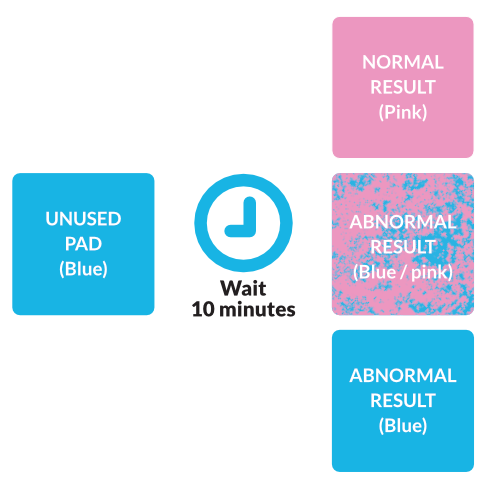What is neuropad®?
A guide for members of the public
neuropad® is a patented 10-minute screening test for the early detection of diabetic foot syndrome; a condition which can lead to serious complications such as foot ulceration and even amputation. The test is completely painless.
Half of all people with diabetes may develop peripheral neuropathy, including peripheral autonomic neuropathy.
We often find that complications develop before treatment starts, and this isn’t a good thing. Early identification of possible problems is a considerable advantage and treatment can be started early.
Think of the test as an early warning system for your feet. Screening for ‘at-risk’ feet is the job of all of those caring for people with diabetes.
Preventing a foot ulcer from developing is preferable to treating one, or suffering the human and economic consequences of treatment failure.
Nerve damage to the feet is a common complication of diabetes, but is often not noticed until it has become quite advanced, potentially leading to serious complications.
neuropad® helps to solve this problem with a simple colour change test and provides an early warning sign of possible more serious nerve damage, which could lead to ulceration and even more serious problems if left untreated.
Damage to the nerves in the feet because of diabetes can result in the sweat glands not producing enough moisture, leading to dry and cracked feet.
The medical term for this is
Sudomotor dysfunction.
Sudomotor dysfunction is one of the earliest detectable neurophysiologic abnormalities in distal small fibre neuropathy and is a common complication of diabetes. (Sudo is the Latin word for sweat by the way)

Here’s how neuropad® works
A neuropad® is stuck to the sole of each foot like a sticking plaster and left in place for 10 minutes.
The pad is blue to start with and should turn pink, in the presence of moisture from sweating, to indicate a normal result.
If the neuropad® test patch stays blue, or if it turns a patchy blue / pink, then this indicates that you may have some level of nerve damage and that your sweat glands are not working properly as there is not enough moisture to complete the colour change.

The pad is pink

Normal result.
Feet are sufficiently moist and soft.
Pad is blue / pink

Positive for anhydrosis (inability to sweat).
Sudomotor dysfunction detected. Evidence of small fibre denervation and of autonomic neuropathy.
If home testing, report findings to your healthcare team. Start daily treatment with neuropad® foot repair foam.
Pad is blue

Positive for anhydrosis (inability to sweat).
Sudomotor dysfunction detected. Evidence of small fibre denervation and of autonomic neuropathy.
If home testing, report findings to your healthcare team. Start daily treatment with neuropad® foot repair foam.
An important note for those who are colour blind
Colour blindness may make it difficult to distinguish blue from pink.
If that is the case, then ask someone to help you check your results.
Has neuropad® been clinically studied?
Yes. There have been more than 40 research papers published in international medical and scientific journals demonstrating that the neuropad® test is a valid indicator of early nerve damage to the feet and may predict future ulceration in the feet of people with diabetes.
It’s like an early warning system and the earlier you know something may be wrong the better chance you have of doing something about it.
In clinical trials, the sensitivity and specificity of neuropad® was comparable to that of well-established hospital-based tests.


